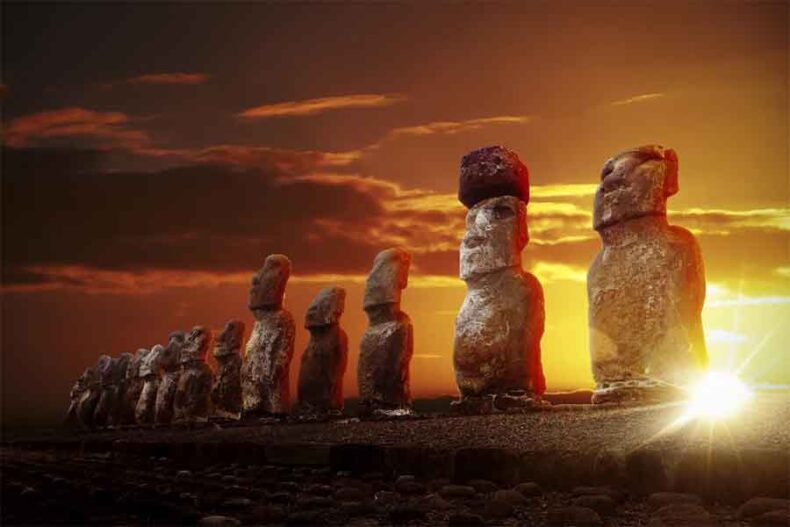a widespread wildfire has caused unfortunate damage to the cultural heritage of Chile by permanently affecting the age-old monolithic Moai statues in the famous Easter Islands of Polynesia.

A Cultural Crisis
The island’s mayor Edmund Paoa stated in an interview with the radio station Radio Bio Bio, that the damage that took place in the national park is a historical crisis and is irreversible, he said that no amount of money can mend the harm done to an age-old preserved piece of culture and era. He also informed the radio station that a group of archaeologists from the Easter Islands is leading the research in this case.
The national park authorities have informed that more than 100 hectares have been affected by the blazing fire and easter islands fell into the misfortune. As per the estimation, more than 1000 Moais are located in that area and each one f them has unchallenged historic value.
Carolina Perez, the cultural heritage undersecretary stated that the island which lies 3500 km off the west coast of Chile has been the prey to the dancing flames of the wildfire. Reportedly, the area around the Ranu raku volcano has been marked as the most affected area, this is also a matter of concern because this as well as a UNESCO world heritage site.
This accident is a huge blow to the government as well. The area of Eastern island which is 3500 km off the coast as mentioned depends solely on tourism, the tourist income which the locals receive maintains their living and lifestyle. This dependence already underwent a huge blow after the pandemic of 2020 when the tourist inflow in the area shut down and caused great misfortune for the community of the area.
Tourist-dependent, Easter Islands were in the process of recovering from the damage the virus caused when something like this happened which increases the magnanimity of the event. Other than economic, this incident is a great cultural loss. The statues symbolized the values of ancestors.
This symbolization was made as a spiritual representation for and to the Rapa Nui people who built the statues. Each statue represents a person from Rapa Nui history who is a place of worship for the community as the spirits of their past, their ancestry. The island is now looking towards the museum for financial support for financing the conservation team and all the material needs to preserve the great Moai statue. This incident can be referred to as another incident of the Polynesian cultural crisis.

Through the pages of history.
If we go back to the pages of history and research a bit about the significance of the statues we will figure out why the people and the government is taking this incident so seriously. On Easter Island, there are almost 1,000 enormous stone carvings and statues, the greatest of which is a 74-ton monument that is 10 meters tall.
The figures, which are arranged to create one ring around the land and face inland, were carved by the local Rapa Nui people somewhere between 1400 to 1650 mostly in the 13th century. They are distinguished by their long ears and deep-set eyes, but they also wear spectacular multi-tonne caps fashioned of a different kind of rock.
Each one was regarded as the individual’s actual physical manifestation. A British naval commander gave one of the statues, known as Hoa Hakananai’a, to Queen Victoria in the 1860s. It is now on display in the British Museum. In 2018, the authorities on the island and the government of Chile demanded its repatriation.
Polynesians have long lived on the island before Chile conquered it in 1888. The monuments are believed to symbolize ancient living ancestors of the Polynesian inhabitants of Easter Island and are linked to a great ritualistic and cultural value for communities. Using hand chisels made of basalt stone, groups of five or six men spent around a year finishing each figure.
The ancient figures were presumably fashioned from tuff, a type of volcanic ash. Such a historic figure will take a lot of sensitive care and maintenance to bring it back to its shape and structure.













